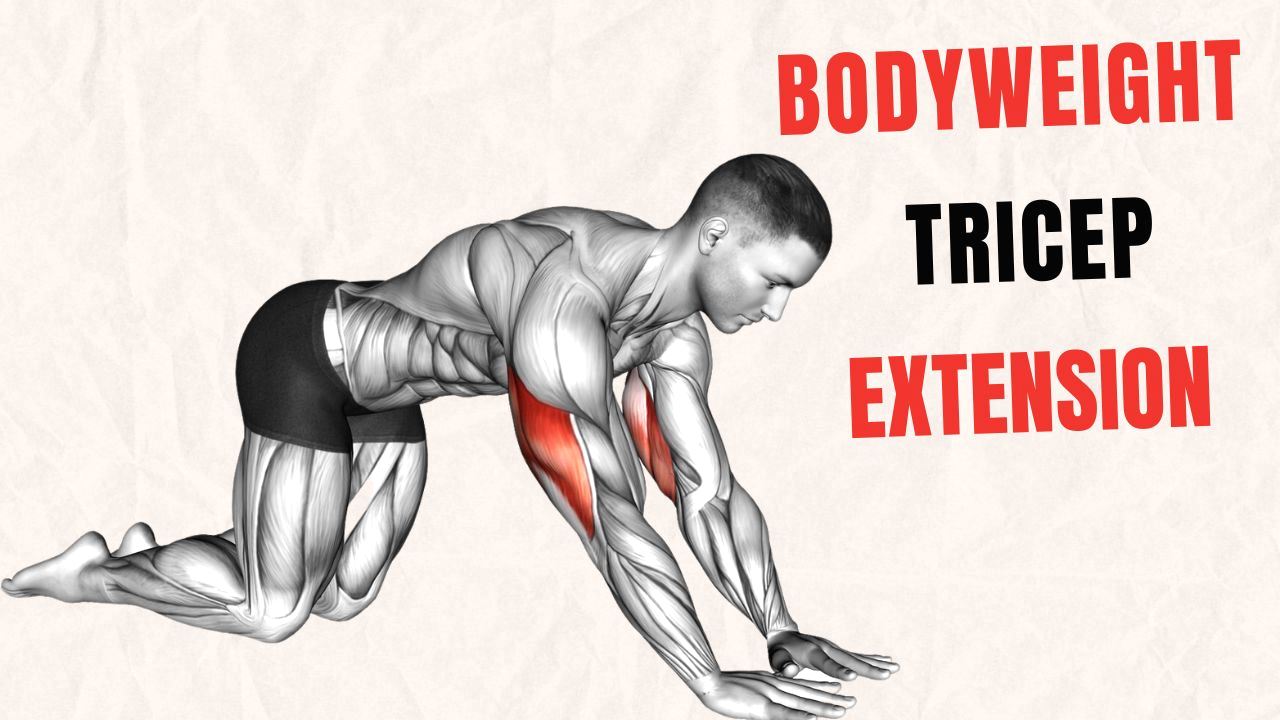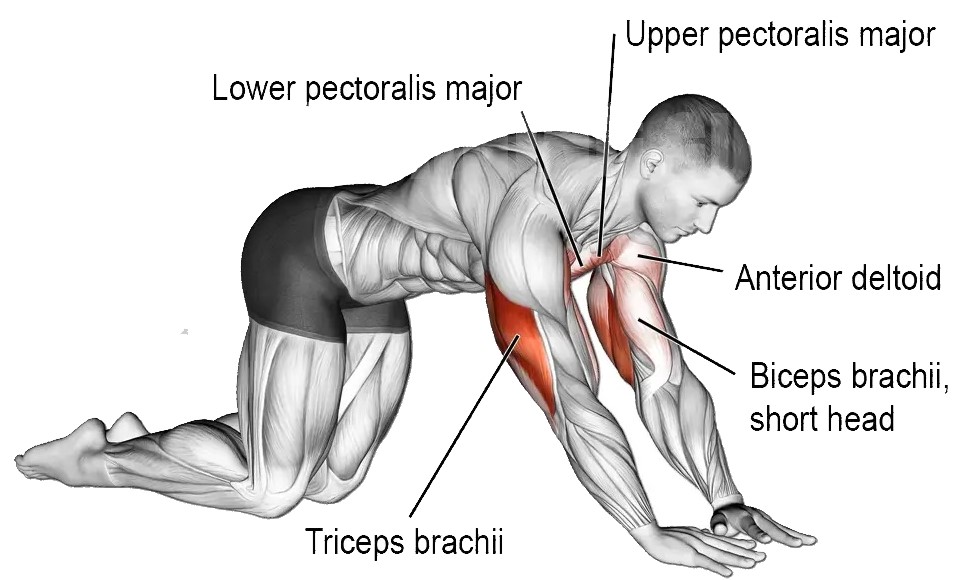The bodyweight triceps extension, also known as the body-weight skull crusher, is a highly effective exercise for targeting and strengthening the triceps muscles without the need for any gym equipment.
This exercise is ideal for beginners with limited upper body strength, as it provides a solid foundation for building muscle and strength.
To increase the difficulty, you can adjust your body position by moving your knees backward or leaning forward, shifting more of your body weight onto your hands.
To make the bodyweight triceps extension harder, try two variations:
- First, move your knees backward, increasing the leverage and emphasizing the triceps more.
- You can lean forward and put more weight on your hands, which makes the workout harder.
- For a more advanced version, try the standard bodyweight triceps extension.

Bodyweight Triceps Extension Muscles Worked
- Primary Muscle: Triceps Brachii (Long, Lateral, and Medial Heads)
- Synergists: Pectoralis Major (Sternal and Clavicular Heads), Anterior Deltoid
- Dynamic Stabilizers: Biceps Brachii, Forearm Flexors
- Mechanics: Compound Exercise (Involving Elbow Extension and Shoulder Extension)

How To Do Kneeling Bodyweight Triceps Extension
- Kneel on the floor with your knees hip-width apart and your toes tucked under.
- Place your hands on the floor directly under your shoulders, fingers pointing forward.
- Engage your core and keep your body in a straight line from knees to head.
- Bend your elbows, lower your chest towards the floor, and keep your elbows tucked in by your sides.
- Exhale as you push through your palms to extend your arms and return to the starting position.
- Start with 3 sets of 8 to 10 controlled reps.
Tips and Form
- Keep your elbows tucked in by your sides to minimize shoulder involvement and maximize tricep activation.
- Fully extend your arms at the top and lower your chest close to the floor at the bottom (without touching).
- Avoid letting your hips sag or pike up during the exercise.
- As you get stronger, try holding a pause at the top of the movement for an extra challenge.
- If you feel any pain in your elbows or lower back, stop the exercise and consult a trainer for proper form guidance.
- Instead of kneeling, you can modify the exercise by leaning against a wall for an easier variation.

Manish brings over 10 years of hands-on experience in weight lifting and fat loss to fitness coaching. He specializes in gym-based training and has a lot of knowledge about exercise, lifting technique, biomechanics, and more.
Through “Fit Life Regime,” he generously shares the insights he’s gained over a decade in the field. His goal is to equip others with the knowledge to start their own fitness journey.
